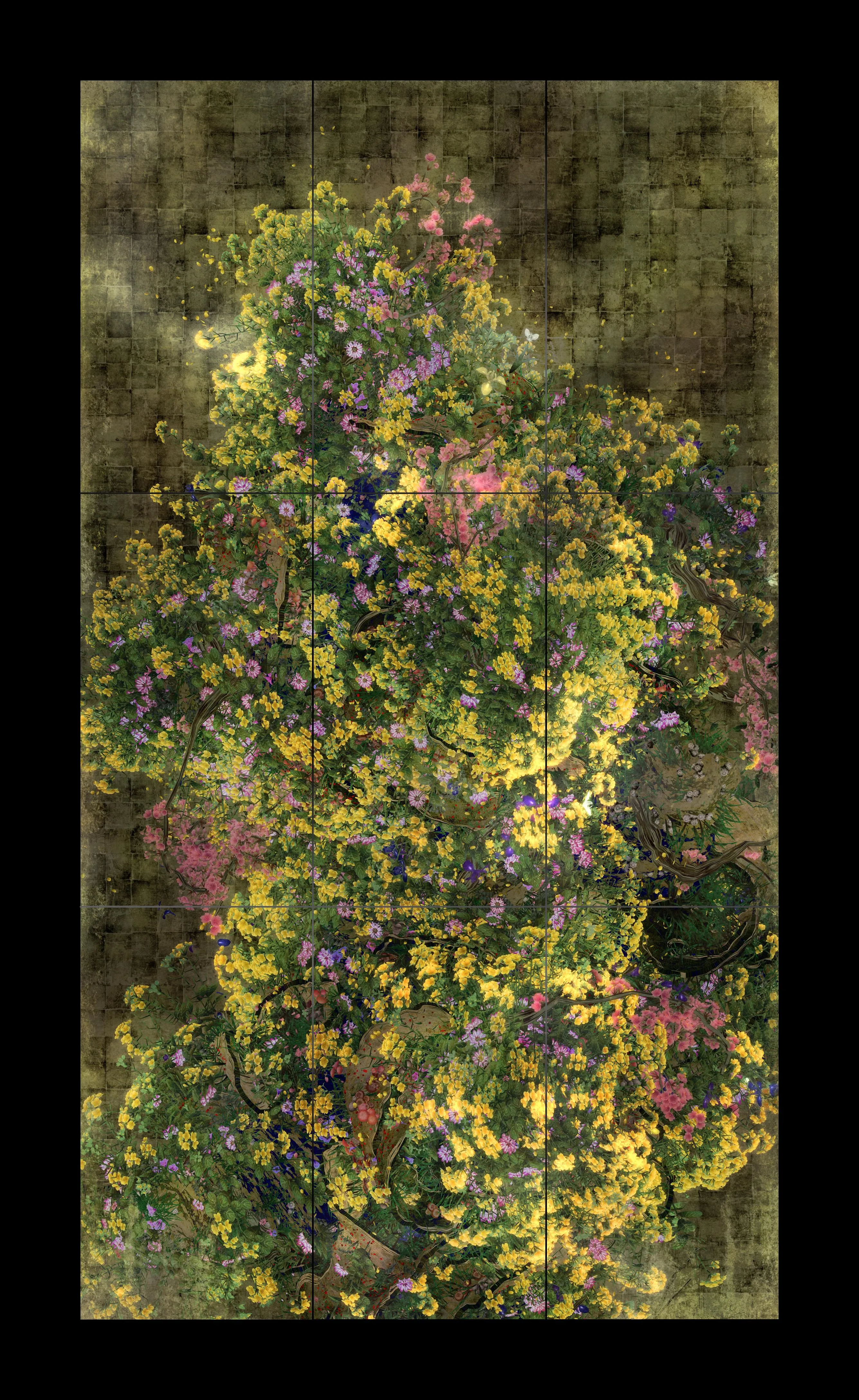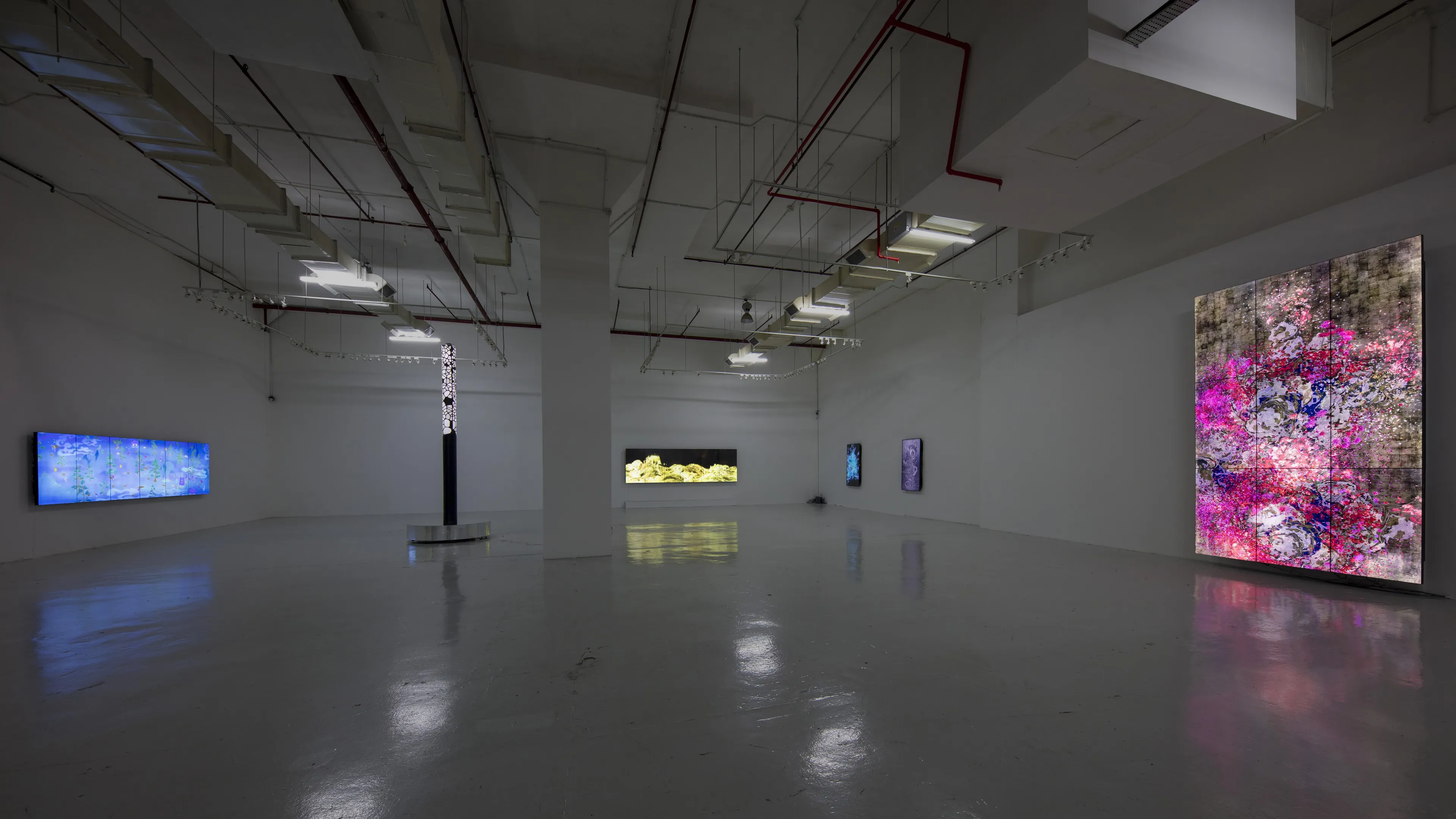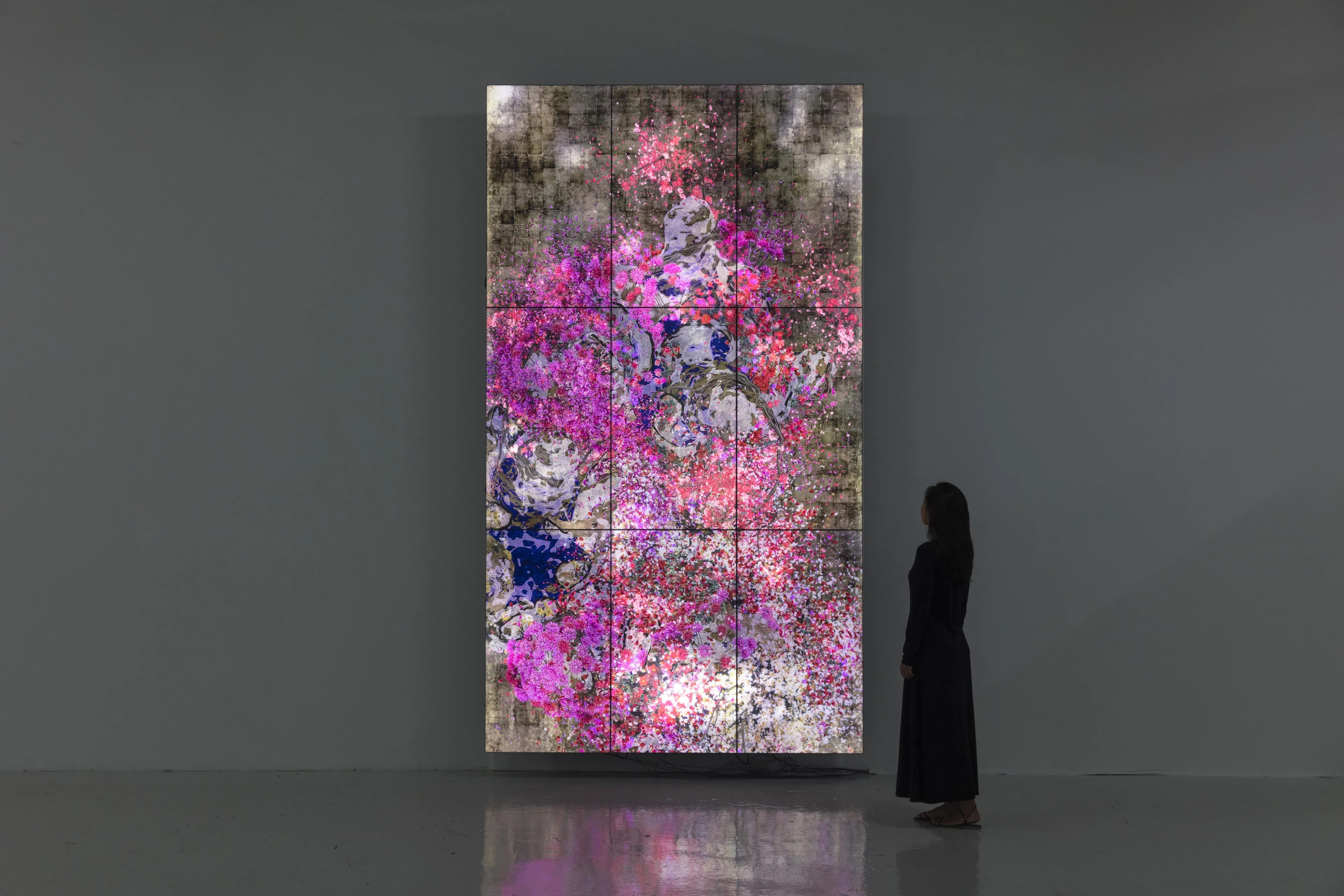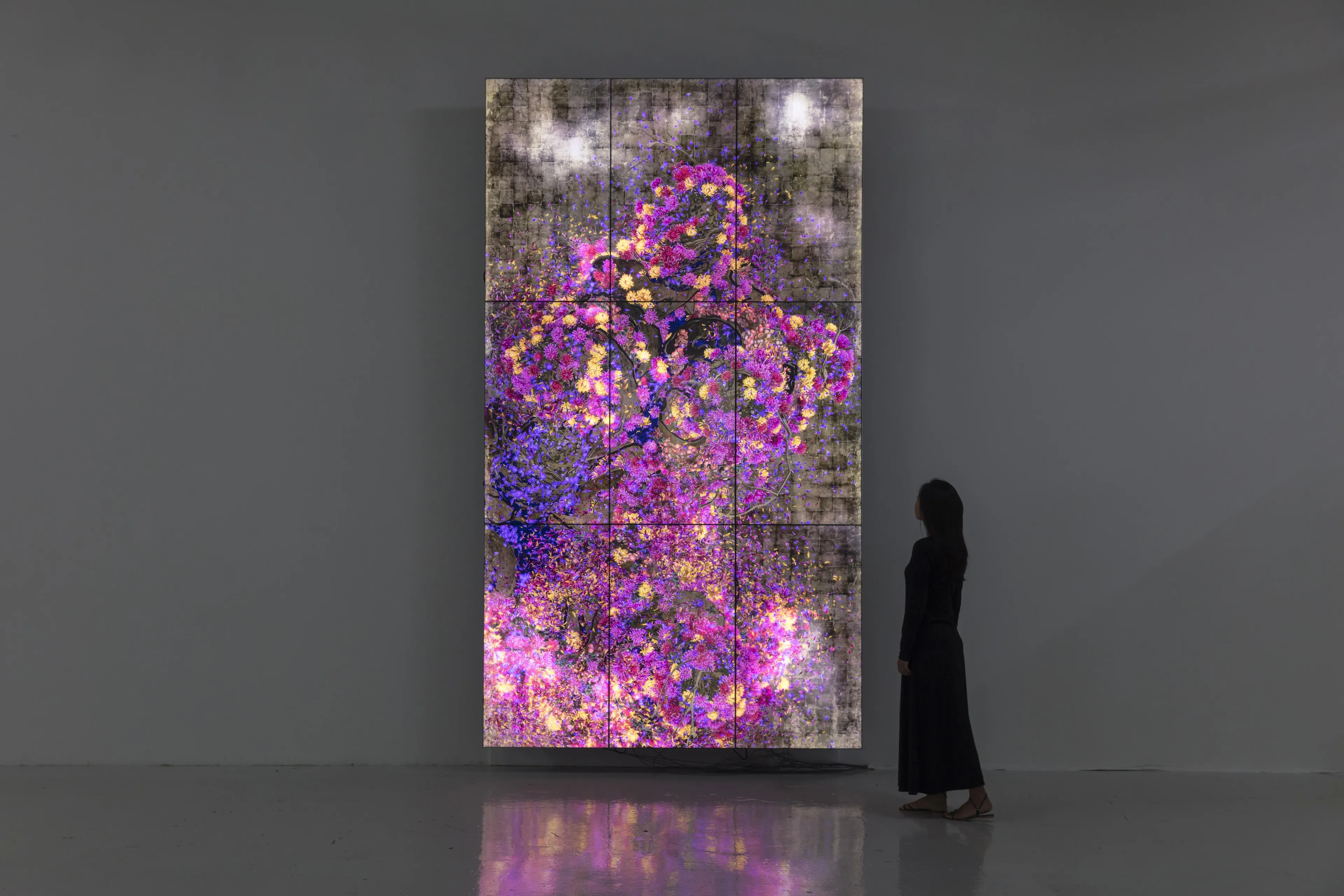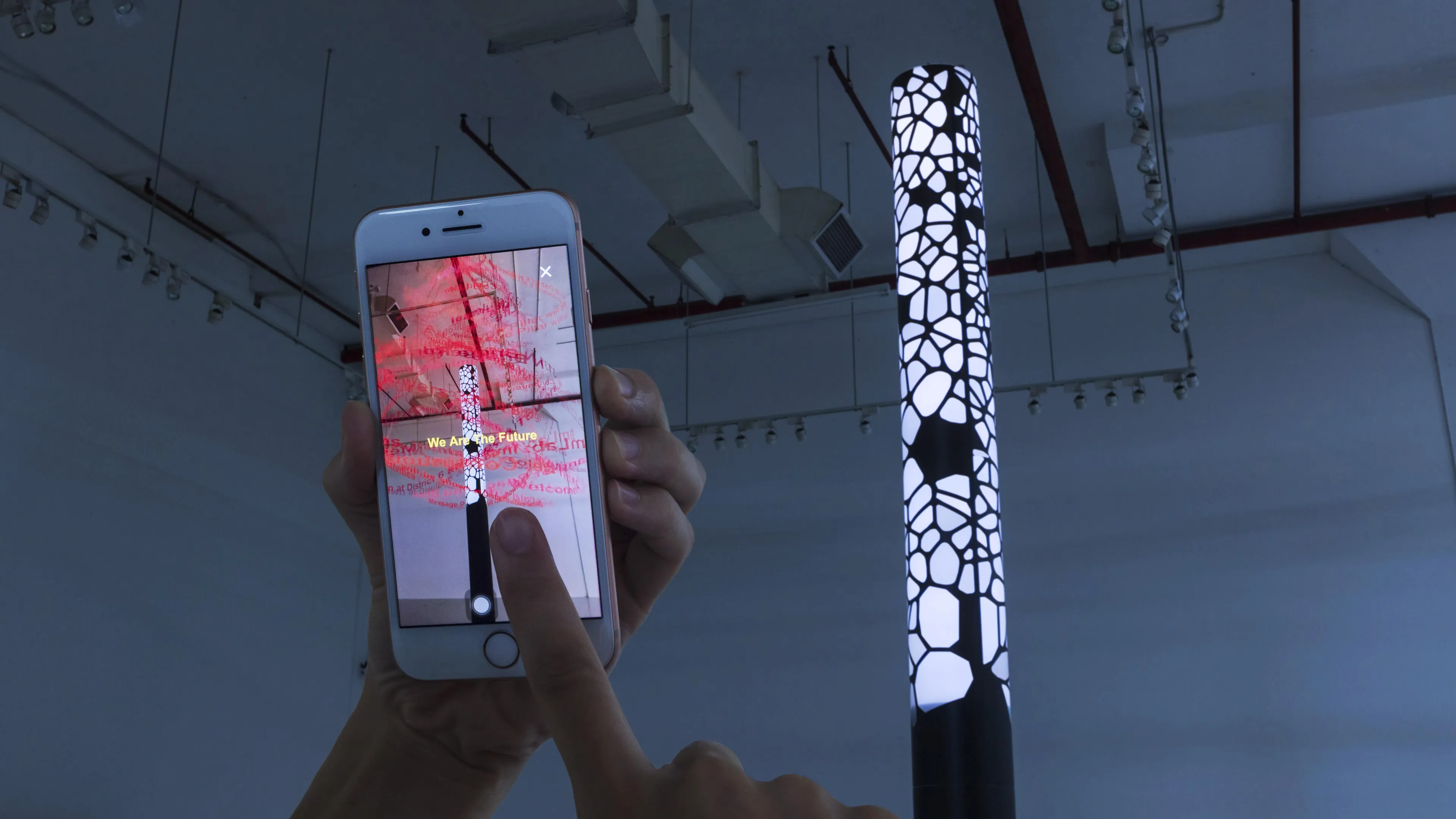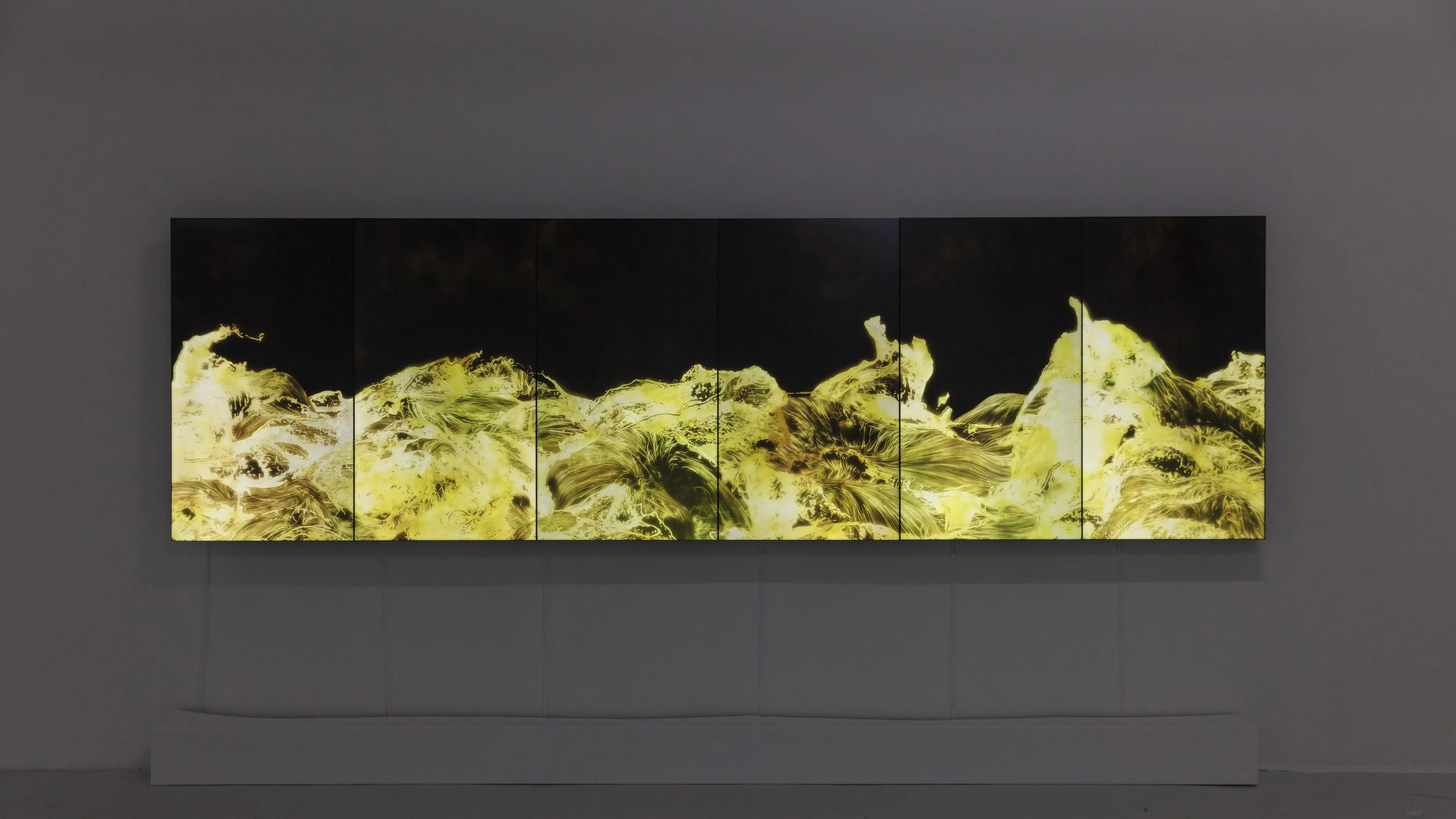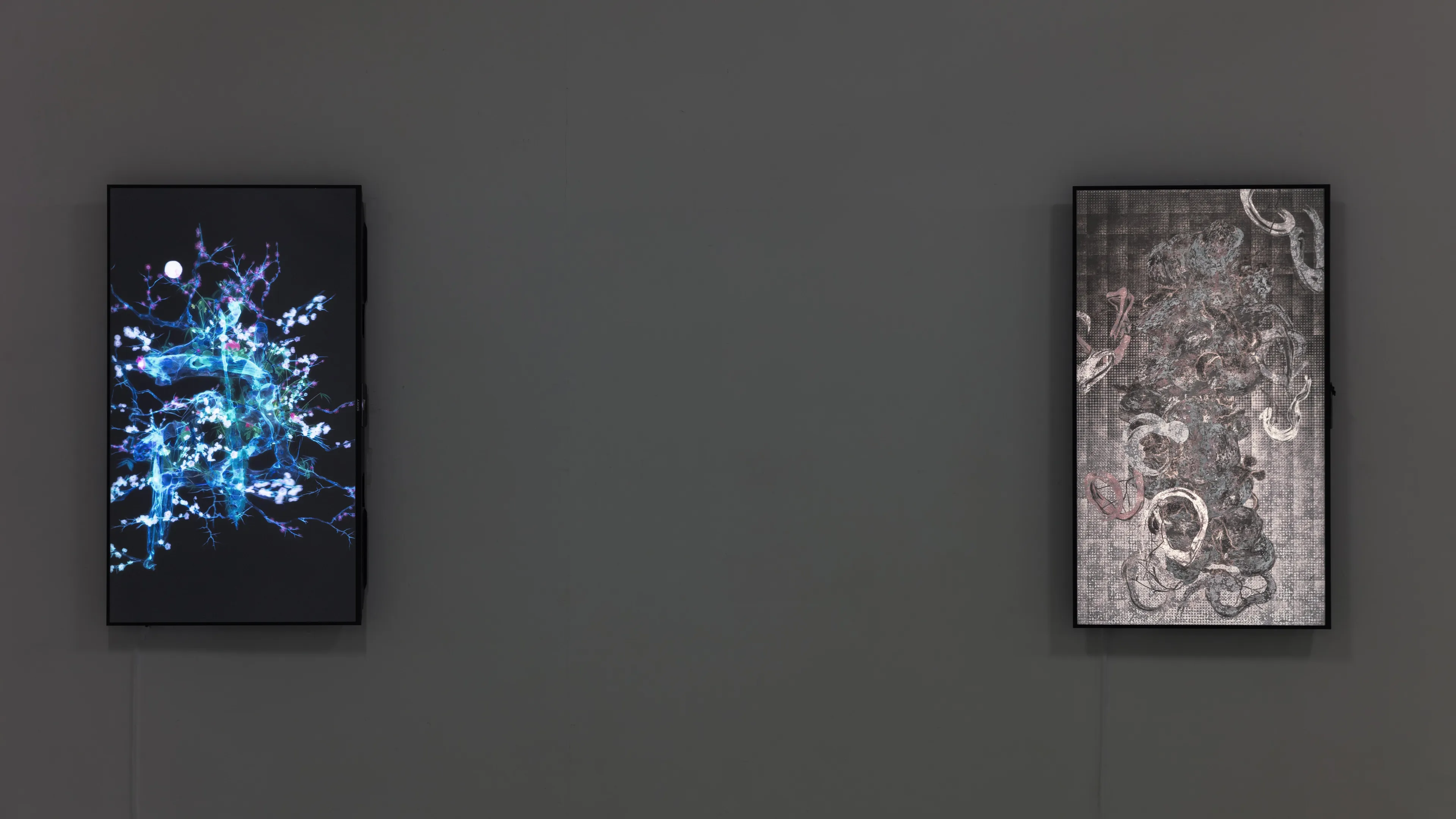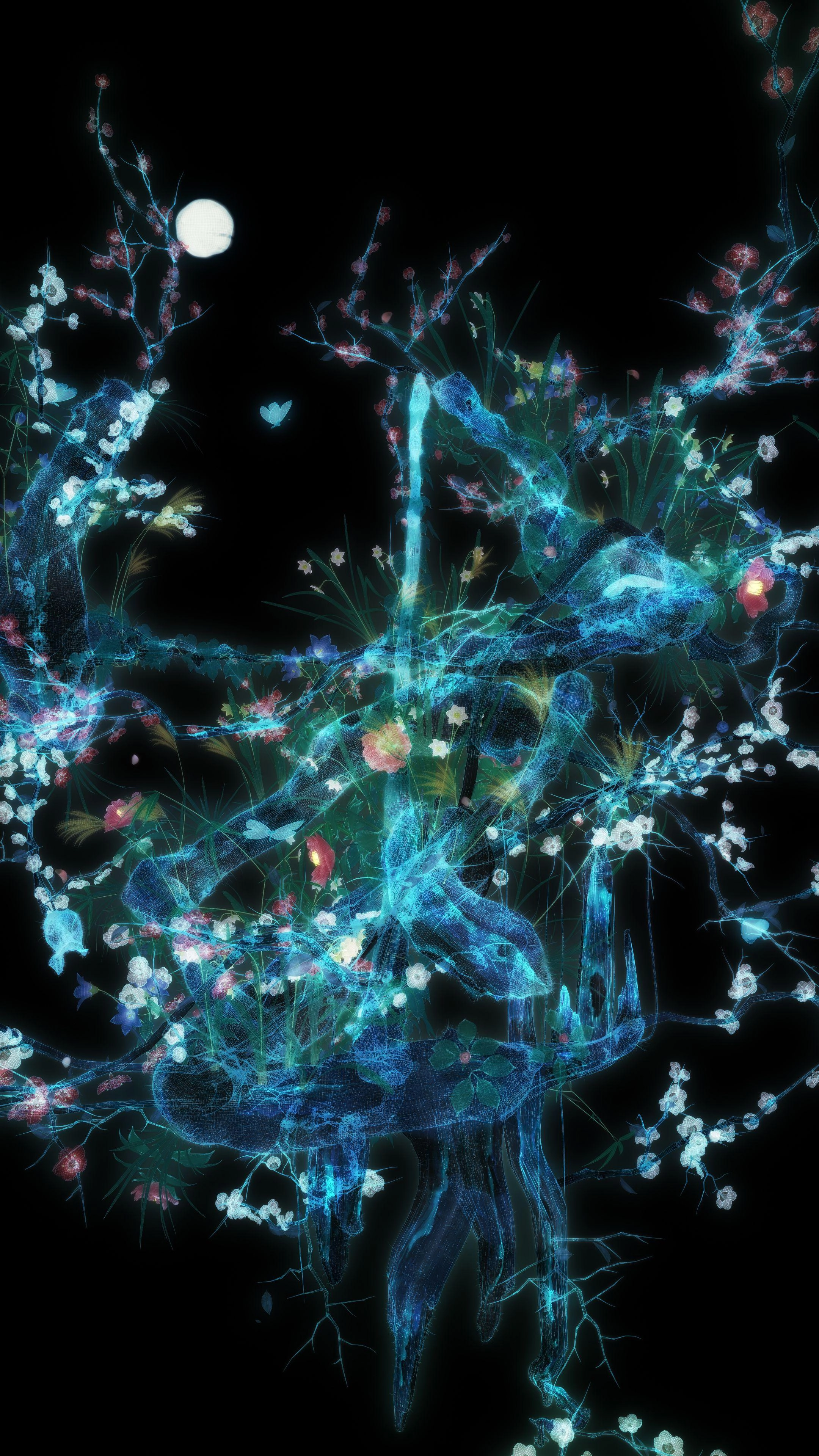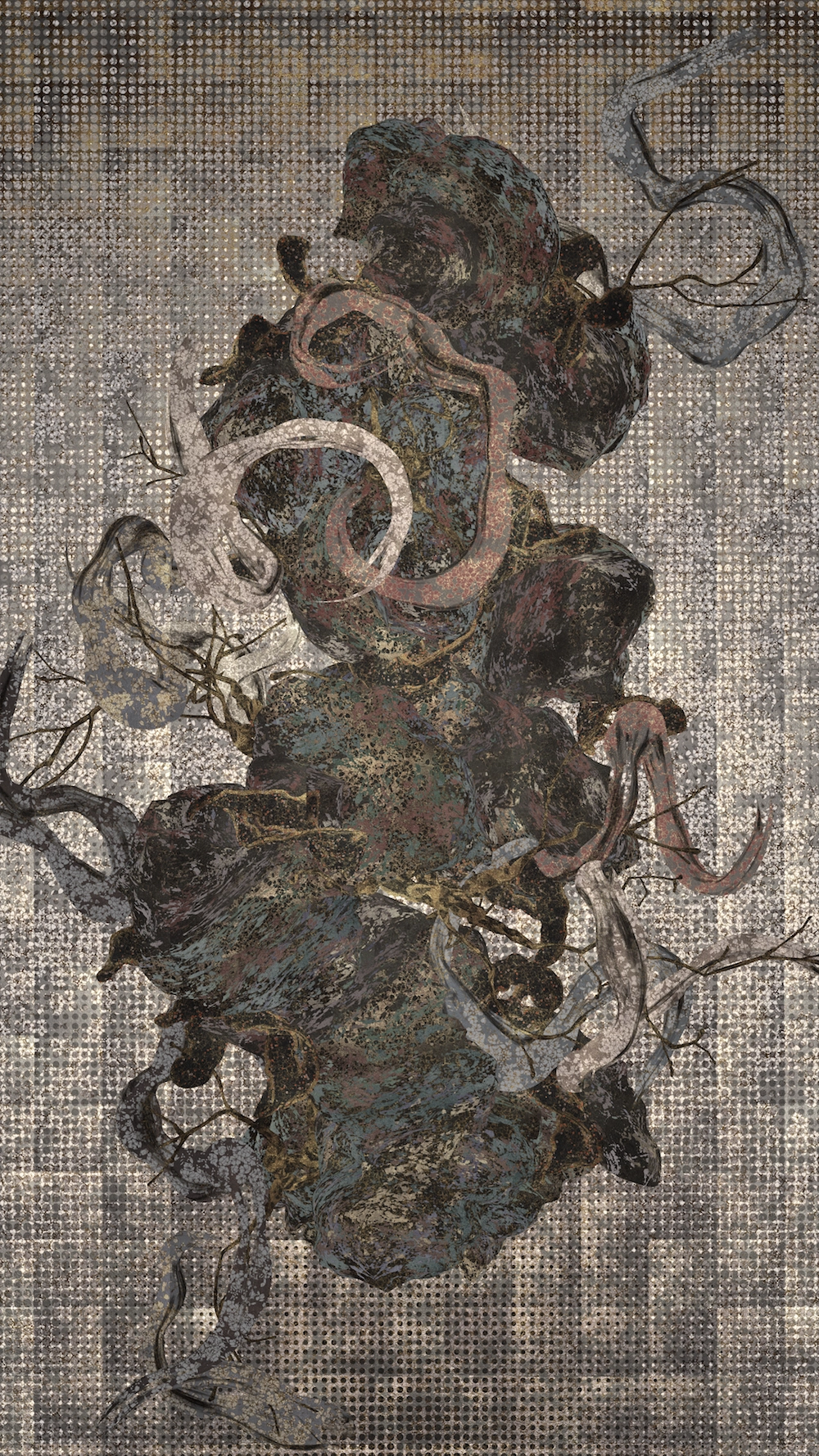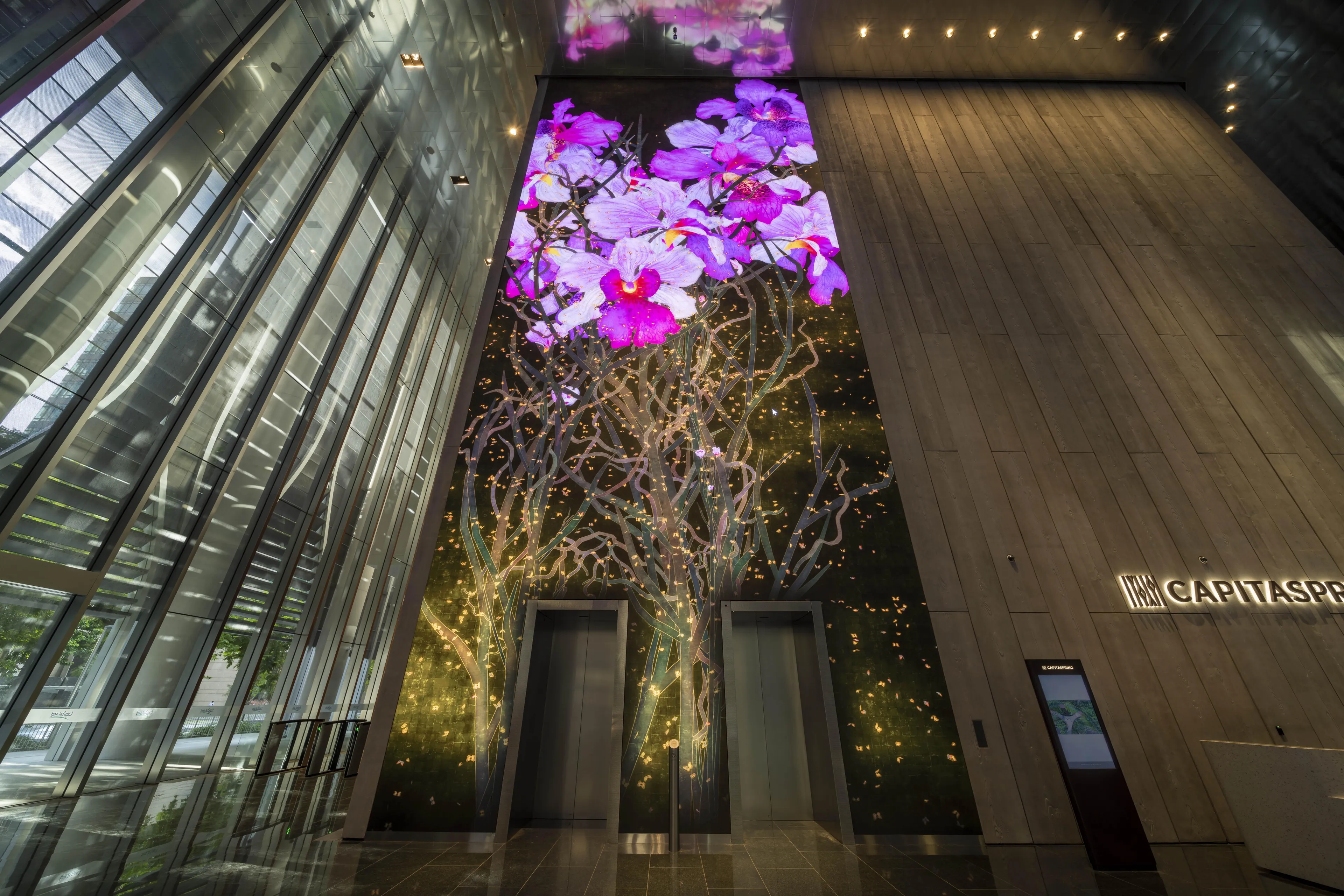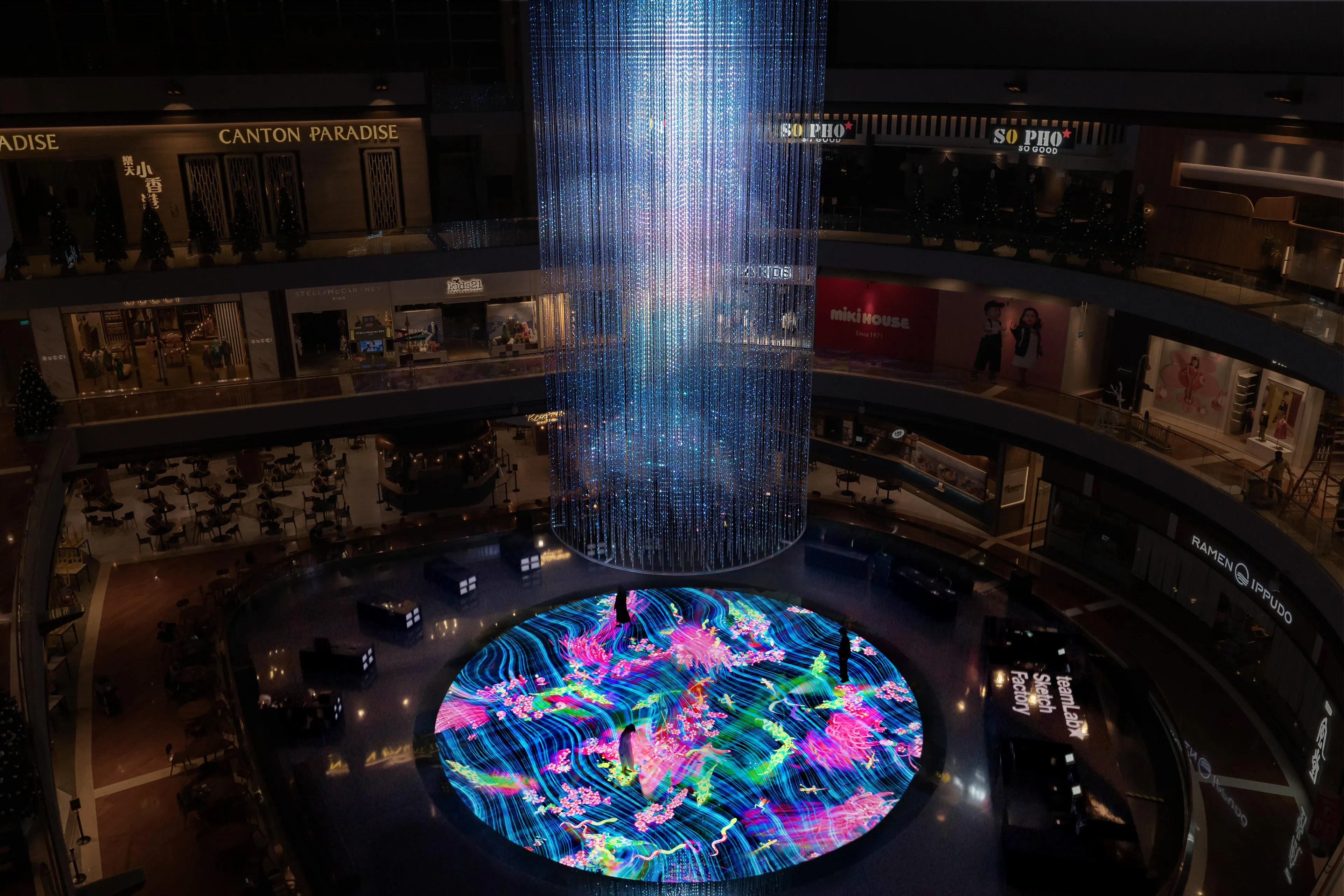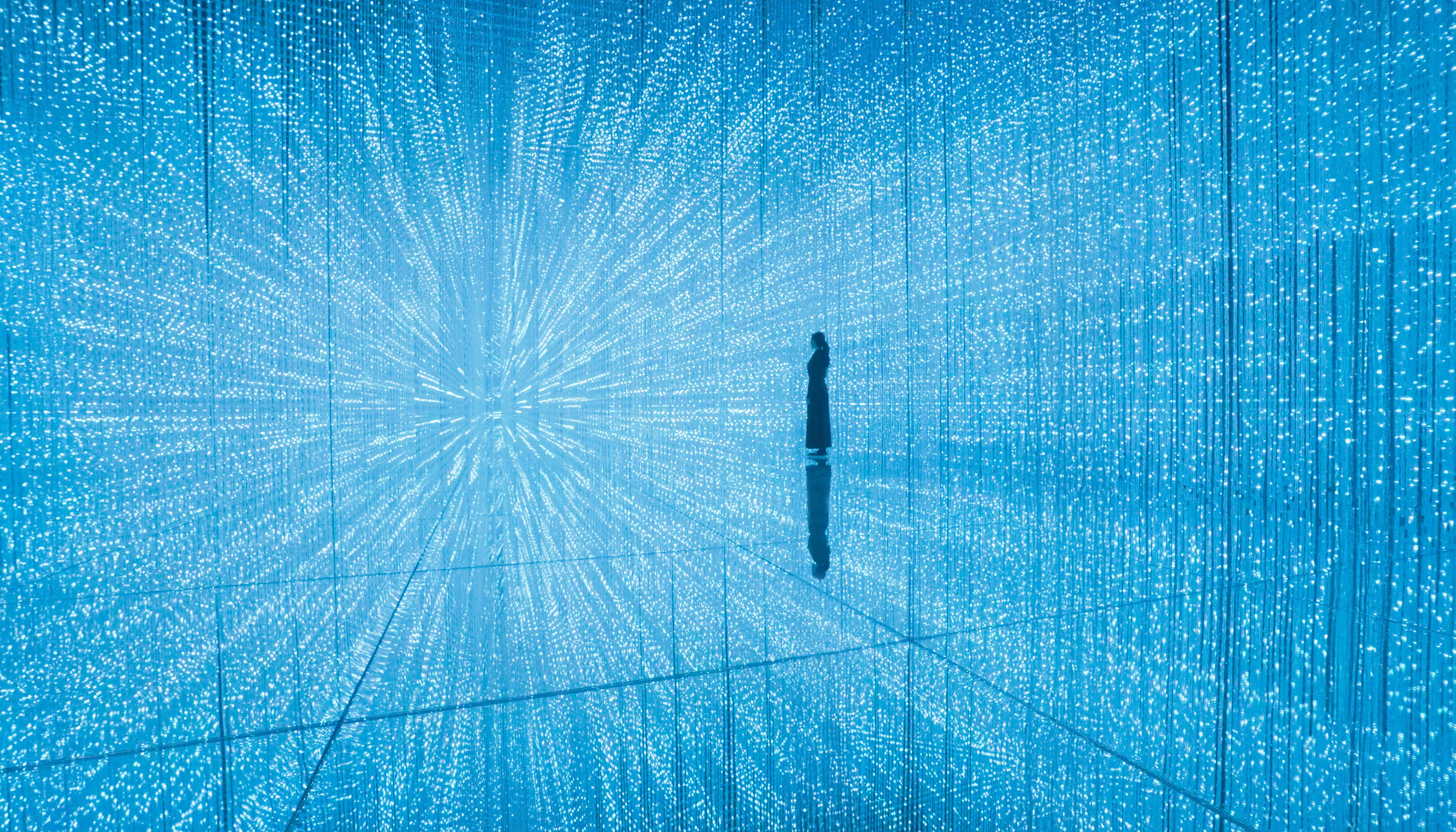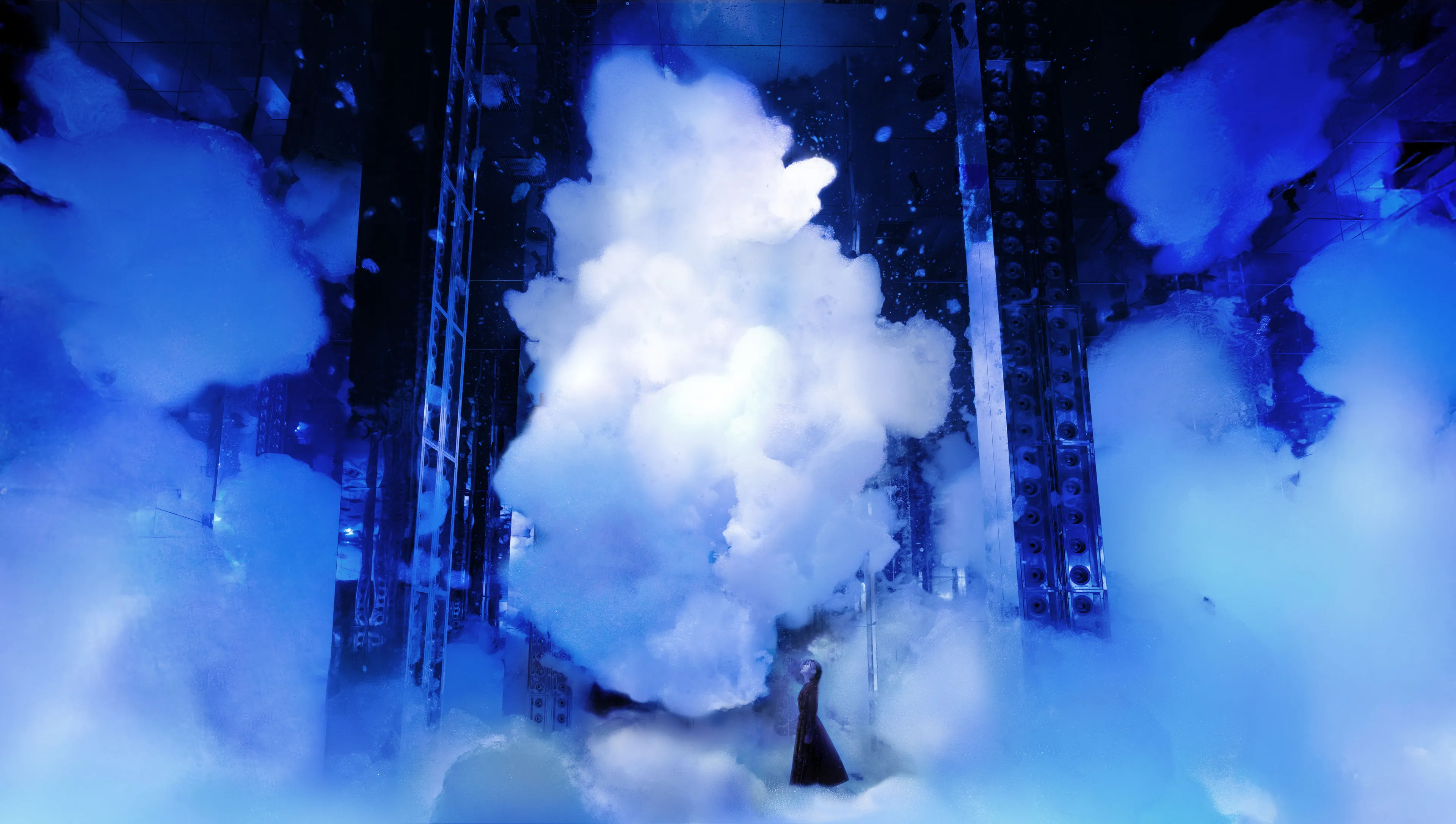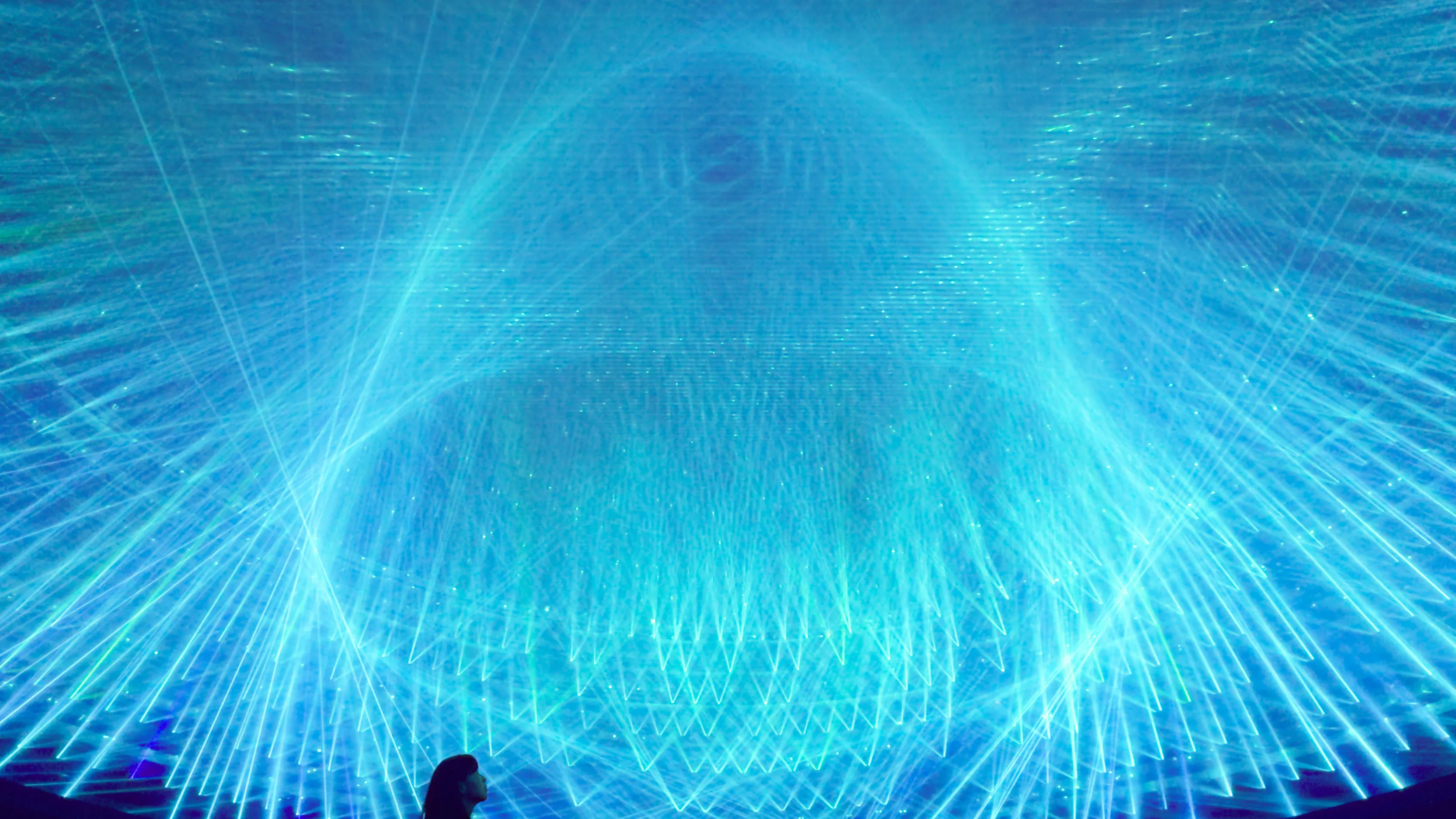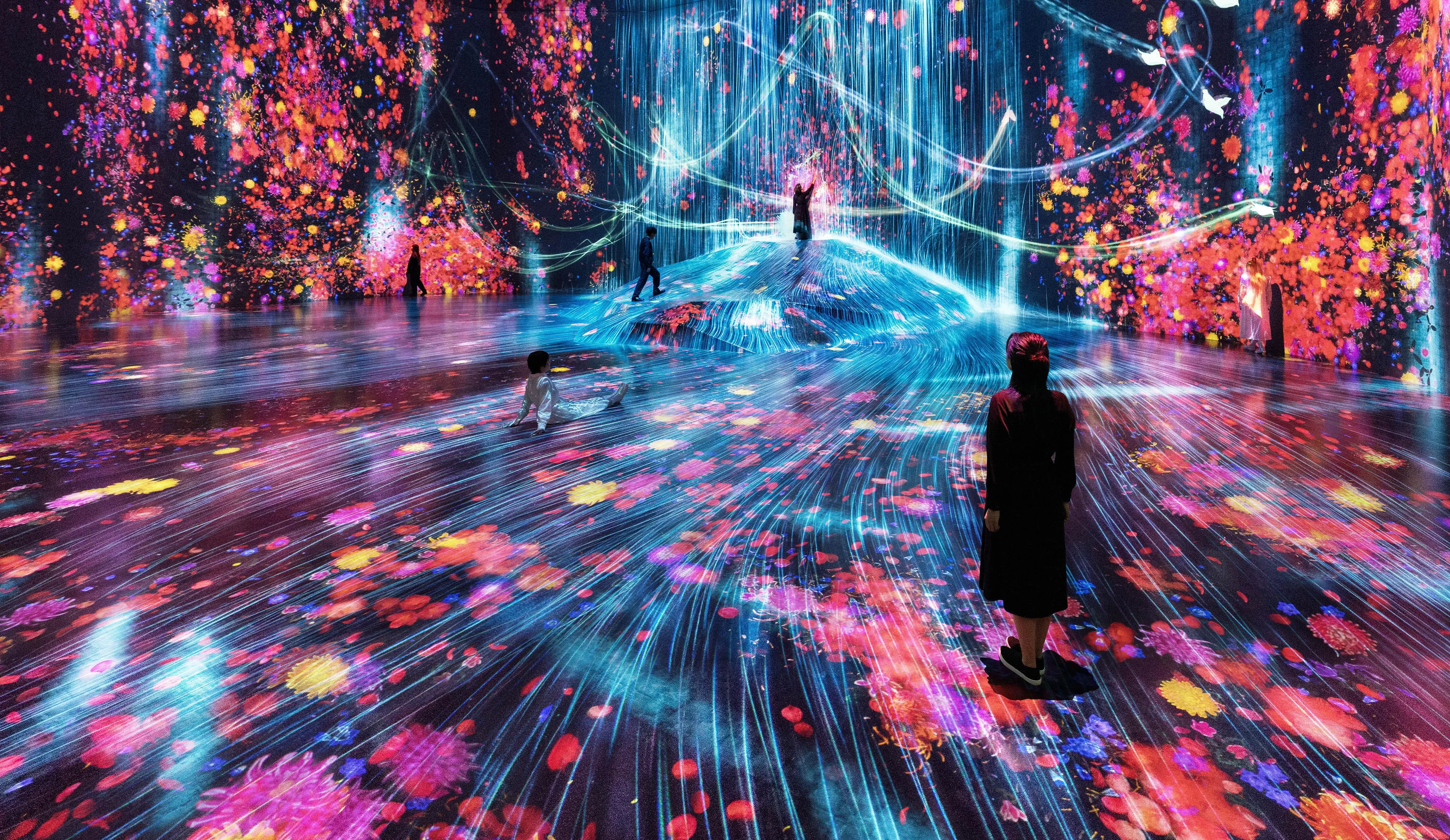Cold Life
A calligraphic series of brush strokes modeled in virtual 3-D space forms the character 生 (Japanese/Chinese for life) which transforms into a tree. As time passes, various life forms begin to grow from within the tree.
This artwork was created by peeling away the surface of the artwork Life Survives by the Power of Life, 2011.
In computer graphics, and similarly in this digital work, wireframe models created with high levels of data are rendered as 3-D objects. When the surfaces of these computer-generated images are peeled away, their underlying mesh-like structures are revealed. Expressed by the intricacy of this work, teamLab exemplifies 3-D rendering in its stripped-down state while maintaining a highly complex and elaborate construction.
Nature brings us both blessings and disaster, and with the progress of civilization there are benefits and negative implications; nature and civilization are always connected. There is no absolute evil or true beauty. There is no easy way to understand, no simple way to arrange our feelings and our sensitivities. We must face every situation as it comes, to not despair, to face forward, and to go on with life.
teamLab has been working on the Spatial Calligraphy series since the collective formed. Spatial Calligraphy offers a contemporary interpretation of traditional Japanese sho (calligraphy) in an abstract space. It reconstructs Japanese sho in three-dimensional space and expresses the depth, speed, and power of the brushstroke. Butterflies, birds, animals, plants, and flowers appear from the calligraphy expressing the passing of the seasons. According to Zen Buddhist writing, “In all living things Buddha nature dwells.” All things are impermanent and the natural appearance of things is the Buddha nature. What we put into shape is that which we, the living, think is the heart of life.
